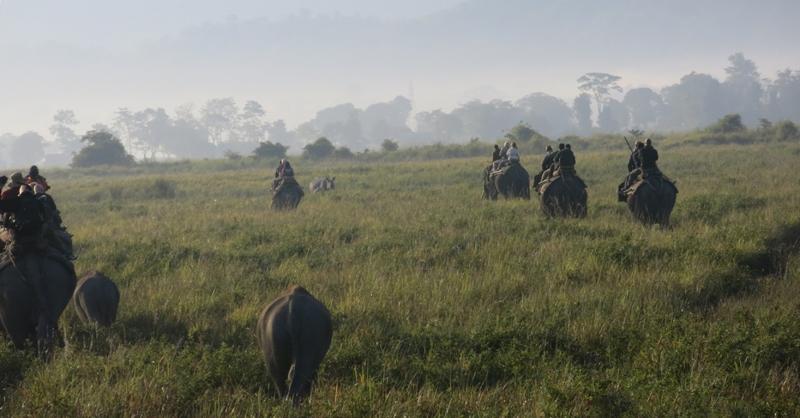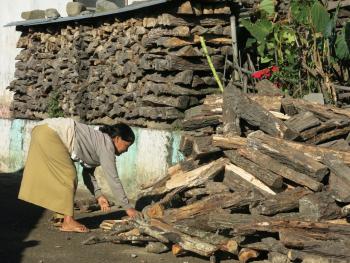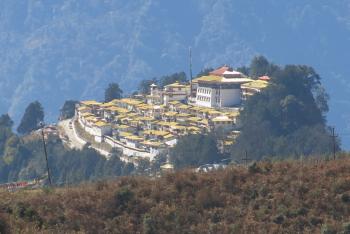India – memories from Arunachal Pradesh
This article appears on page 36 of the June 2017 issue.
In November and December of 2016, I was fortunate enough to be one of the 340,000 people to visit Arunachal Pradesh, a state in Northeast India, last year. This area requires a special permit to visit.
One highlight of the trip was a visit to the Hornbill Festival (hornbillfestival.com), an annual festival that began in 2000 and features drumming, music, sports and dance performances by members of the tribes of Nagaland.
The private guide I used was CK Rai (ckrai09@yahoo.co.in), who had escorted a friend of mine to the festival two years before. He charged $185 per day.
A bumpy start
My trip started rather inauspiciously. I made the cardinal mistake of getting my dates wrong and I arrived a day later than I should have.
I also happened to get caught up in the Indian government’s decision to allow only small notes of currency to circulate in an effort to combat corruption. The banks and ATMs had huge lines, with no money to dispense. I had taken a large sum of cash with me, and I was eventually able to get it exchanged.
Once CK caught up with me, all was solved. In the meantime, everyone worked on credit.
Arunachal Pradesh is the “Wild East” of India. It is a place of primeval beauty, with waterfalls coursing over rugged mountain ridges and forested hills descending to the valleys of Assam and Nagaland, the Himalayas visible in the background. I traversed three climate areas during the 18 days of my time in India.
For much of our trip, we were near the borders of Bhutan, Tibet, China and Myanmar. There was a very large Indian military presence in this area.
We started our journey with a drive over the Sela Pass (13,680 feet), said to be one of the most difficult roads to drive in the world. There are innumerable switchbacks and landslide zones. My advice — do not sit in the front seat of the vehicle, do not look at the tires, don’t ask when the shocks were last installed, and just hope you have a driver as good as the one I had, BD, short for Bad Dog.
Down and around we went until we reached Tawang, where the largest Buddhist monastery in the world, outside of Tibet, is located. The head monk was very gracious in offering us butter tea; unfortunately, I think it’s an acquired taste.
We then visited a deserted Urgelling Monastery, where four monks had arrived for a special month of prayer. This was one of the truly memorable little villages I encountered on this trip. The sixth Dalai Lama was born there.
Village visits
During the next few days, we descended the mountains and visited several villages. Most evenings, I stayed with local families. Most of my meals consisted of rice, bitter gourd and small pieces of chicken “hacked” Chinese style. Dessert was not usually served.
A high point of each day was a stop at one of the little milk-tea stalls along the side of the road, where we would have lunch or milk tea. CK would always go in first to check that the toilets were hygienic.
We enjoyed another culinary treat at the Dragon Restaurant (in Tawang), where CK said they had the best momos, Tibetan dumplings that are similar to kreplachs, gyozas or pelmeni. While there, I met an Indian man who was employed at a local orphanage, the Jhamtse Gatsal Children’s Community (jhamtsegatsal.org), founded by Lobsan Phuntsok, a former monk whose story was told in the documentary film “Tashi and the Monk.” I was really pleased to give him the golf pencils I had brought from California for just this purpose.
Park visits
We moved on to an ecocamp next to Nameri National Park, where CK and I went white-water rafting. From the raft, I was privileged to see a macaque and an elephant in the wild spraying himself with dirt.
Tweeting birds could be heard from my upscale tent. And, as we were leaving the ecocamp, we were surrounded by monkeys.
We soon arrived at the Assam tea area. Every morning by 9:00, many ladies, walking with woven baskets on their backs, arrive to harvest the tea. Believe it or not, I had trouble finding a place to buy tea in the area!
Next we drove to Kaziranga National Park, established over 100 years ago. I went on three safaris in one day (8,000 rupees, or $124, for an elephant safari and 2,000 for a jeep safari).
For my first safari, the elephant safari, we were greeted by many elephants all lined up like taxis at a taxi stand waiting for customers. We climbed a ladder to a boarding platform, then got onto the elephant and proceeded to go into the swampy grassland, where we saw many one-horned rhinos, wild deer, water buffaloes and other animals and heard many of the more than 350 varieties of birds that inhabit this area. It was spiritual.
The second safari of the day, the jeep safari, offered no tiger sightings, only a “You should have been here yesterday!”
During the third safari of the day, we were charged by one of the more than 2,000 rhinos in the park (representing two-thirds of the world’s total). In 1980, there were only 200.
A man with a shotgun rides on all of the safaris, but he will only use the ancient-looking rifle to scare a threatening animal.
At the end of our adventure, we left the park and descended the mountains, passing many poinsettias that stood about 10 feet high along the road. We then crossed to Ma¯juli Island by river ferryboat, and the landscape changed to include bamboo growing 60 feet tall and huge banana palms. Bamboo is the lifeblood of the area, and it is even used for food.
Part of Ma¯juli Island is a place of unparalleled scenic beauty. I was reminded of photos that a friend who lived in Indonesia around 1945 had shown me — wicker huts set on stilts, women weaving under the huts and no cars to be seen, only bikes on the dirt paths. Each house had its own little garden, and CK was proud to stress that they all were organic.
Festival finale
From Ma¯juli Island we drove to Kohima, home of the Hornbill Festival.
Because of the popularity of the festival, area hotel rooms are booked a minimum of six months ahead of time and the prices are doubled.
CK said that attendance in 2016 was down, as the festival was poorly attended by Indians because of the rupee situation.
I had three days to spend at the festival. The 10-day festival featured about four hours of performances each day. Each tribe was granted about 20 minutes. The costumes, chanting, dancing and drumming were unbelievable.
When people think of India, they might think of big, crowded cities, incredible shopping for handicrafts, and monasteries and temples of many different religions. The India that I will remember from this trip is one of magnificent wild animals and birds, forests, waterfalls, mountains and picturesque tiny villages caught in a time warp with friendly people.
The memories still linger.




